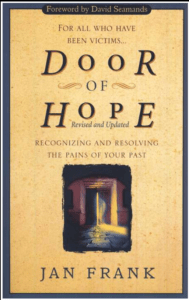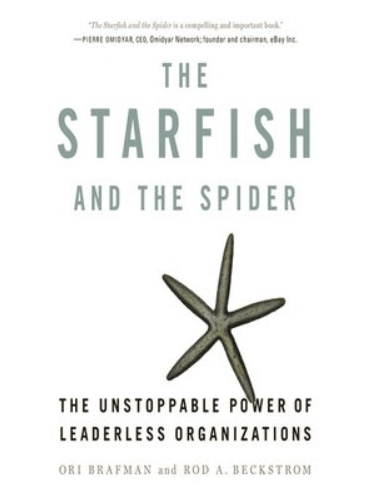
by Jan Frank
I first read Jan Frank’s book many years ago when I began to work with women who had suffered sexual abuse. It is an eye opening account of the devastation and pain caused by this all too frequent travesty. It is estimated that one in three women have experienced some form of sexual abuse. Many men (boys) have, too.
Door of Hope was written by a survivor of such abuse who wished to help others find freedom. Its greatest service is exposing the long lasting effects of abuse that can wreck lives and marriages while offering a “door of hope” and a pathway for gaining freedom and healing through Christ.
I almost always encourage victims of abuse and their spouses to read this book because it helps people acknowledge the depth of pain, hurt, and devastation in their lives, which is necessary before moving forward into healing. Too often victims either blame themselves or minimize what was done to them. No true freedom can be experienced until the reality of the sin against the victim has been exposed, acknowledged, and forgiven. When we whitewash the offense, it sabotages forgiveness and keeps us in denial.
Frank gives some concrete steps for gaining victory.
- Face the problem. This is huge. Most people repress or deny the severity of the damage done to them out of fear, denial, or an unwillingness to “go there.” Until we honesty own up to what happened, no progress can be made.
- Recount the incident. Many counselors and pastors, unfortunately, do not see the value of going through what happened, telling victims to forget about it and move on. This is the kind of thing well meaning people say, but can be extremely destructive to the victim. Until the incident, which has often been repressed in some way, is remembered and expressed, with the associated emotions, it is doubtful that one can really get to the bottom of the problem. (Here let me interject principles I use in Personal Prayed Ministry that Jan Frank does not specifically mention. When people are abused as young children, they experience traumatic pain and lies are planted in their hearts and minds. In addition, there may be associated demonization. As we allow the Holy Spirit to bring back the memories of what happened, we can ask Him to speak truth and healing to our hearts. This is a very important step in finding freedom. If you wish to read more about this, please click here to go to my series on this subject.) Frank points out: “Recounting the incident allows the victim to begin to release some of the emotions around her experience and brings to light that which has been hidden so long.” (p.35) She uses Nehemiah 2:11-18 to justify this process, pointing out how Nehemiah first surveyed the devastation of the walls of Jerusalem before beginning the restoration process.
- Experience the Feelings. Many times abuse victims have deep wells of anger bubbling beneath the surface that have never been allowed to erupt. When they begin to more fully grasp the level of destruction that the abuser brought to their lives without any denial or minimization, it many cause a great deal of anger and bitterness to surface. It was always there, but never acknowledged or allowed to vent, causing problems beneath the surface. Emotions of fear, anger, depression, etc. can point to where the pain and lies reside in the heart, like red flags warning us of hidden land mines. We do not build our lives around our emotions, but we do acknowledge their importance in helping to identify the problem. It is important to invite the Holy Spirit into these emotions when they surface and ask him to speak to our hearts about where they came from and what he wants us to know regarding them from God’s perspective. She quotes Dr. Cecil Osbourne’s book, Understanding Your Past – the Key to Your Future.
“Feelings do not age. Feelings about past events are in us now… Time does not diminish childhood hurts… They do not erode or disappear.” (p. 49) Jesus, the Wonderful Counselor, is able to liberate us from the bondage of unresolved hurts from our past.
- Establish Responsibility. Abusers routinely blame their victims, which young children easily accept and often carry into adulthood. The adult aggressor must bear full responsibility, no matter what he or she may tell the victim. Some victims seek to absolve their abusers from having meant any great harm. This is just another form of deception and must be overcome. In this chapter Frank addresses how various family members may share the blame, such as when the mother turns a blind eye to her husband’s abuse of her daughters. The author explains how many victims feel that they are caught in a double bind, feeling guilty and being afraid of tearing apart the family by exposing sin. In this chapter, Frank asserts: “As you are able to establish the responsibility of your offenders, the door that has held you captive for years will begin to crack open ever so slightly.” (p.73)
- Trace Behavioral Difficulties and Symptoms. In this chapter Frank helps us learn how to identify unwanted behavioral responses, trace how they became established as a pattern in lives, and adopt a disciplined approach to correcting them. My approach for handling such in Personal Prayer Ministry is to approach the Lord in prayer and ask him to speak his truth into the life of the victim. We have found that a “personal” word from the Lord has amazing liberating power. The use of Scriptural truth to reprogram faulty thinking is also very important.
- Observe Others and Educate Yourself. In this chapter, Frank writes of the “therapeutic factor of universality,” which means that it is liberating to discover that others have gone or are going through what we have experienced. She also points out that observing others helps us better understand our own responses and behavior.
- Confront the Aggressor. This chapter is will help the victim understand how and when to confront the one who abused him or her, if that is still possible or advisable. It is very important not to do this prematurely, as it can set a recovering victim back, if he or she is not prepared for the attempts of the abuser to deny, deflect, or accuse.
- Acknowledge Forgiveness. Not every victim can or should be reconciled to his or her abuser, but all of us must forgive. In my opinion this chapter is more about reconciliation. Forgiveness needs to happen at the beginning of the healing process, immediately following coming to terms with what really happened. I have written a lot about this topic. You can read more by clicking her. Just because we forgive or release a person from our own personal demand for vengeance, it does not mean we should trust them. Reconciliation is a two way street built on trust and mutual desire for the process to go forward. Sometimes this is possible between victim and abuser when there is true repentance, but not unless trust is reestablished.
The remainder of the book has plenty of useful information. If this is a subject you wish to pursue, please read my own writings on the subject. I also highly recommend Biblical Healing and Deliverance by the Kylstras.



